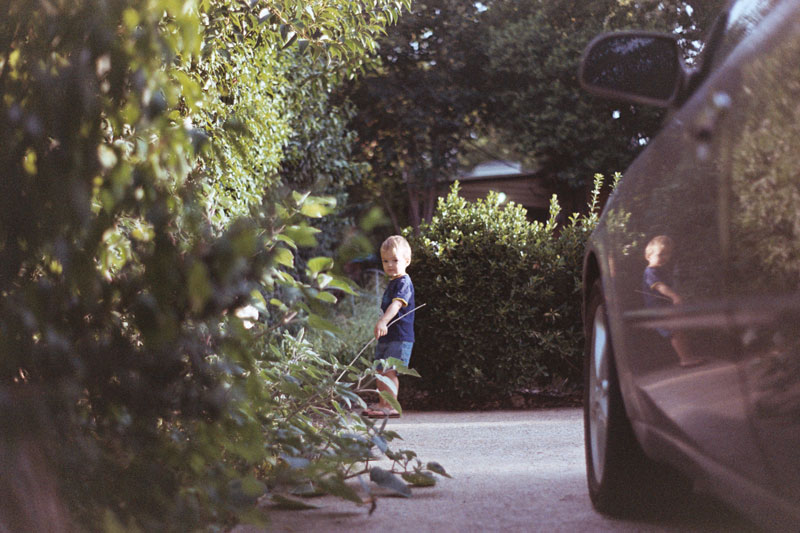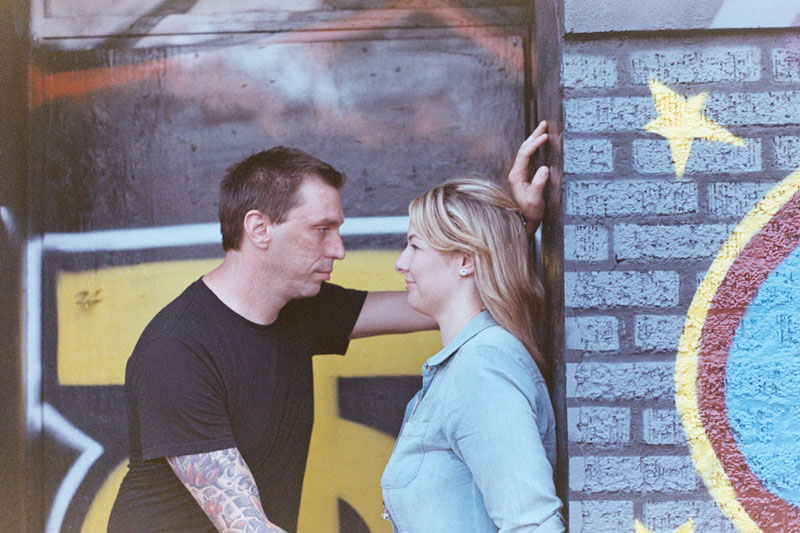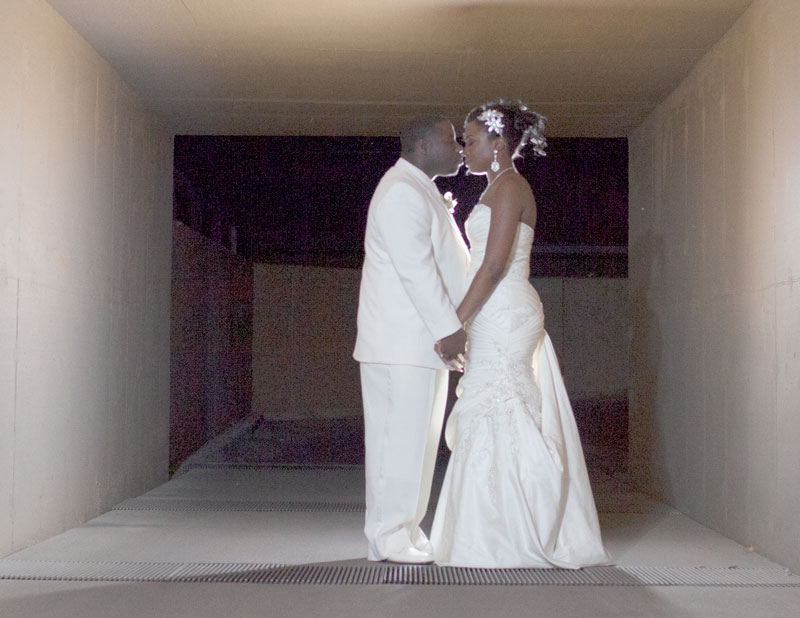So, in Part One of our image quality series for digital photography, we discussed blurry images. I promised to cover grain in the next series. I realized that when talking about grain in photos, it may be necessary to define both noise and grain. Grain was originally used to describe the crystal grain structure on film. At higher film speeds, more grain shows up in the image. Underexposing can also cause more grain in photos shot with film. So a lot of people these days describe a photo as being “grainy” when in fact, it should be called digital noise. I’ve also heard too many times people describing something as pixellated that is actually noisy as well. More about pixelation in my next part to this series. This leads us to another definition. So, what is digital “noise”?

Noise is an introduction of colored pixels either recorded by the camera’s sensor or it is introduced during post-processing in the form of JPEG artifacts. It tends to show itself in the shadows mostly. Noise can look grainy and fuzzy which is why a lot of people misuse the term grainy to describe the effect. But, can a digital photo have grain? Absolutely!! Let’s say you have a film image to begin with that is grainy and converted to a digital format, then the grain is still present. Also, many post-processing presets and actions these days are used to create a faux film grain effect on digital images. But, I would venture to say that in most cases, if you are referring to fuzziness in your digital images, it is probably noise. So how does it happen and what do we do about it? Let’s dive right in:

1. High ISOs.
The first thing that I learned about noise was it was more likely to occur in higher ISOs. Different cameras have different capabilities for high ISOs. For instance, when I shot with my Canon 50D, as soon as I went over 800, I noticed noise in most of my shots. Shooting with a full framed camera, has increased my ISO to at least 2000 before noise gets introduced. This may not be a problem for you if you shoot only natural light or outdoors. But, when I started shooting weddings, I found out very quickly that I really needed that range to avoid crappiness in my images. But, let’s say you can’t afford to get a full frame camera now OR it is not practical for you. Then, there are ways to reduce noise introduced by high ISOs. But, remember any form of noise reduction software actually takes away information which can lead to images looking plastic or not real. When working with newer photographers, I’ve noticed most of these problems can be settled by understanding how far you can push your settings on your camera. We are assuming for this tutorial’s purpose that you are shooting in manual mode and not relying on your camera’s automatic functions. So for example, let’s say your settings are F5/6, ISO 1000, and shutter speed is 1/125 and you are getting noise. You can not lower your shutter speed or you may introduce camera shake and you don’t want to lower your aperture too much because maybe you are shooting a group of people. Your camera only handles going up to 800 before everything starts looking fuzzy. At these settings if you lowered your aperture a couple of stops to 4.5 and still get your subjects in focus while reducing your ISO to 650 to compensate and stay within your camera’s happy range.
Solution: 1. Get a camera with higher ISO capabilities. This seems like an easy way to solve the problem, but not always. I can still get noise using my full-frame camera so understanding your settings and camera are key. 2. Use Noise reduction software. I like Lightroom’s noise reduction. But, Noise Ninja is another good plug in to invest in. 3. Know how to maximize your settings. This takes practice and continuing to look at your settings while you shoot and afterwards. Keep asking yourself, what could I have done in this situation to shoot at a lower ISO. If you have truly maximized your settings, you may need to add more light which leads to #2.
2. Not enough light.
Let’s say you have maximized your settings and you are still getting noise in your image. It could be that you just need more light.
Solution: Can you move your subject more into the light? If not, you may need to add light like an external flash. The simplest way to add more light is to use a reflector. This will bounce available light back onto your subject.
3. Shutter speed.
Some may argue with me on this. But, I have gotten home from a shoot and noticed some terrible noise in my images and noticed one obvious flaw. In this situation, I was shooting at 1/250 for my shutter speed. My ISO was 1600 and aperture 2.8. The image looked a little dark on my screen but, I didn’t think too much of it. I tend to shoot a little darker since I shoot in RAW, but more about that later. When I got home I noticed a lot of speckles across my subject when I zoomed in. And everything just looked bad when I lifted the exposure in editing. This goes back to knowing your settings. My shutter speed was not allowing me to let in enough light. I could have lowered my shutter speed to 1/125 to let more light in. The light I had in the room was already diffused. This is an example of quality of light versus quantity. I hope you are not scratching your head at this point, but some of these things just take good old fashioned experience.

Solution: Know your settings. I know I mentioned this before, but this is SO important!! And every time I notice a problem with noise in mine or other photographer’s photos, it’s usually a direct correlation with settings. So pay attention to your settings while shooting and afterwards when editing.
4. Over-editing.
So here is something that I used to do more when I first started shooting photography. I would underexpose something and then try to correct it later in post-processing. This is where digital artifacts start appearing that weren’t there to begin with. Think about it. You underexposed thereby causing colored pixels to form. Then you try to correct those damaged pixels even more and voila, now you are worse off to begin with. For this reason, I started shooting in RAW very early to avoid this trap. This is not the ONLY reason that I shoot in RAW. But, it is a very good one. RAW allows you to recover some of that underexposure by a few stops which you would not be able to do had you compressed it to a JPEG image in camera. This has saved my butt on more than a few occasions. And even though I’ve been shooting for 8 years now, I still mess up. Sometimes I can’t see my viewfinder because the sun is so bright OR sometimes I just don’t have time to examine the shot and make sure it’s perfect. That’s just the way it is, especially when shooting weddings. Maybe one day I will be perfect, but I’m not counting on it to happen anytime soon.

Solution: Shoot on RAW to gain a few stops of underexposure. Use Noise reduction software to correct noise. But do not introduce more noise in your image trying to correct. Either in embrace the noise or DELETE!!!!
There are so many more factors and technicalities to noise in digital photography. But, for the creative photographer who just wants to increase your possibilities of great images, I have created this blog in a nutshell, so to speak. Please subscribe to my blog for more nuggets of info.
[jetpack_subscription_form]
Also, next time you mis-use the word “grainy,” maybe you will think again. Stay tuned for Part 3 of this series and learn all about “pixellation.”
I would love to hear your comments and questions below.
And stay tuned for Part 3 where we cover the widely misused term: PIXELATION!!!
[print_link]

Leave a Reply